Abstract
Myocardial relaxation is an important energy-dependent process. Hypoxia, unlike ischemia, has not been shown to impair myocardial relaxation. This difference may be because (a) the traditional index to assess isometric muscle relaxation (half time to relaxation or RT½) reflects both changes in developed tension as well as relaxation and (b) the relaxation process is highly sensitive to temperature and previous papillary muscle studies have been conducted under hypothermic conditions. The present study examines the effect of hypoxia on the relaxation process of 31 isometrically contracting kitten papillary muscles at hypothermic (29°C) and euthermic (38°C) conditions using RT½, the peak rate of tension fall (−dT/dt) and −dT/dt normalized for tension ([peak −dT/dt]/T and max [−dT/dt per T]). Hypoxia at 29°C resulted in a fall in RT½ from 278±11 (SEM) to 230±17 ms (P < 0.01) and no change in (peak −dT/dt)/T and max (−dT/dt per T). However, at 38°C, hypoxia impaired relaxation as reflected in a prolongation of RT½ from 101±6 to 126±8 ms (P < 0.01) in spite of a substantial fall in peak tension. Moreover, (peak −dT/dt)/T decreased from −15.4±0.7 to −11.0±0.8/s (P < 0.01) and max (−dT/dt per T) decreased from −25.1±1.8 to −13.8±0.9/s (P < 0.01). In conclusion, the present study demonstrates that hypoxia impairs the relaxation process of cardiac muscle.
Full text
PDF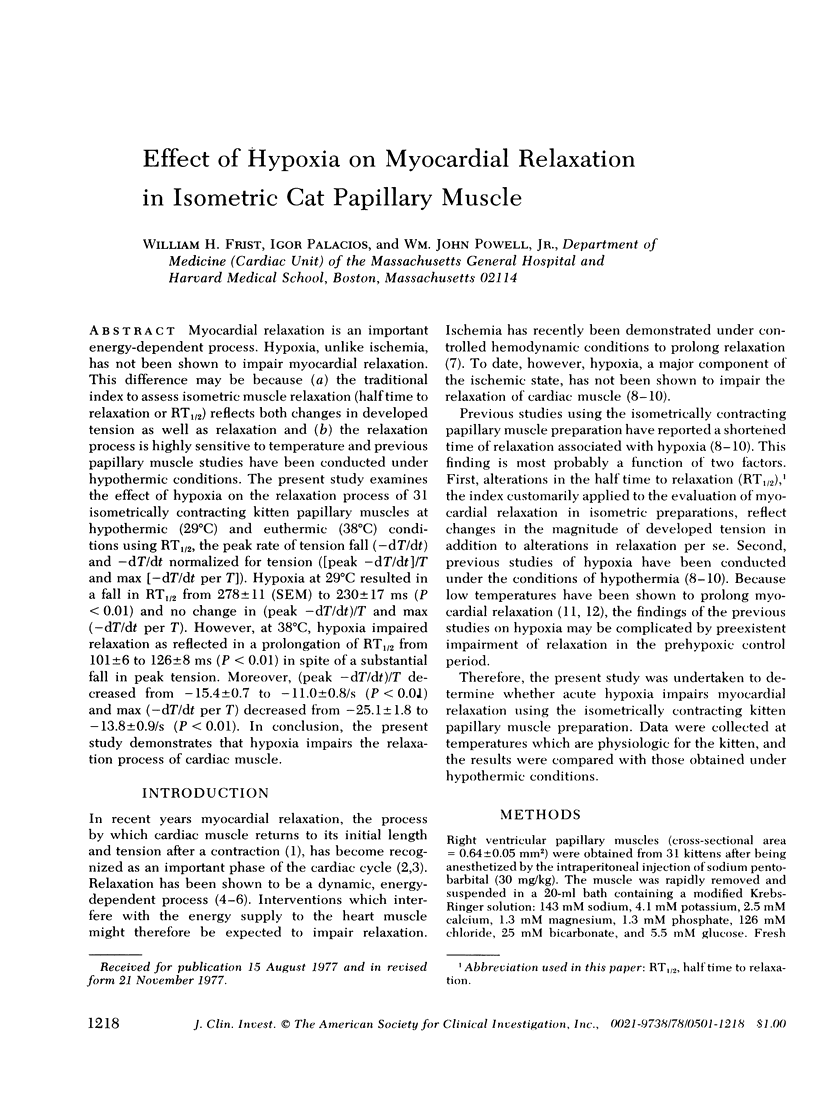
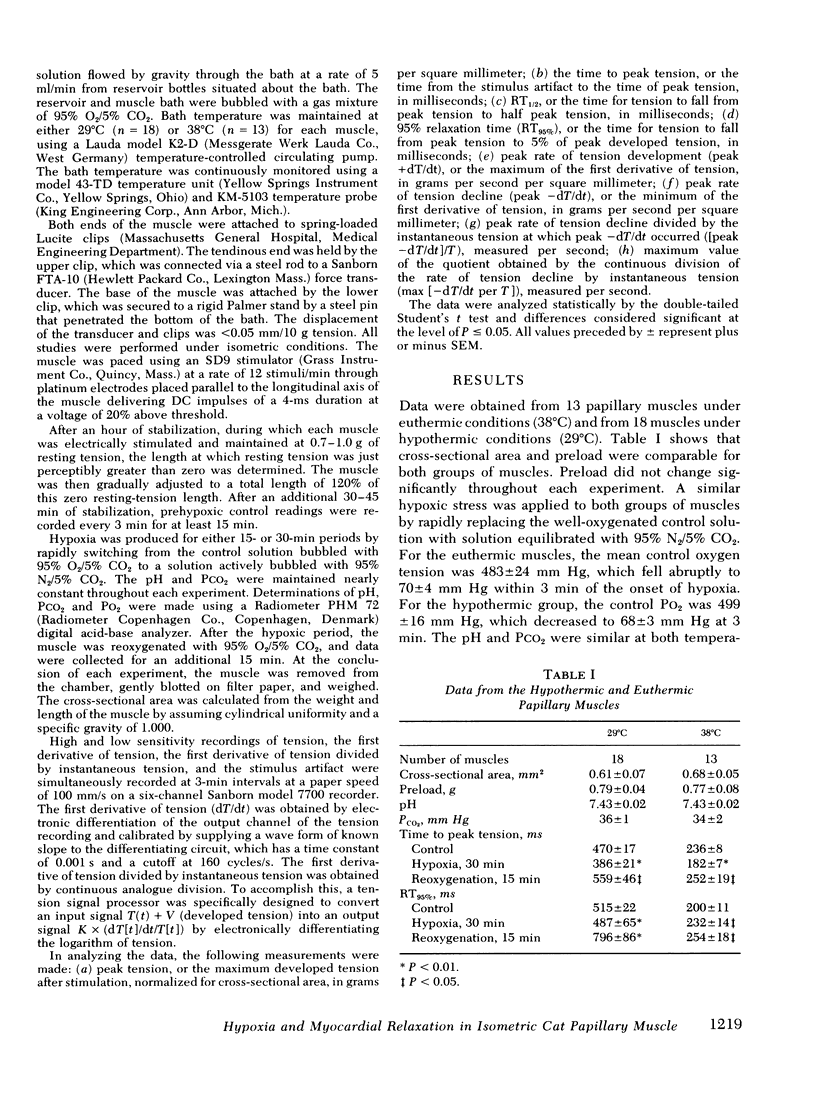
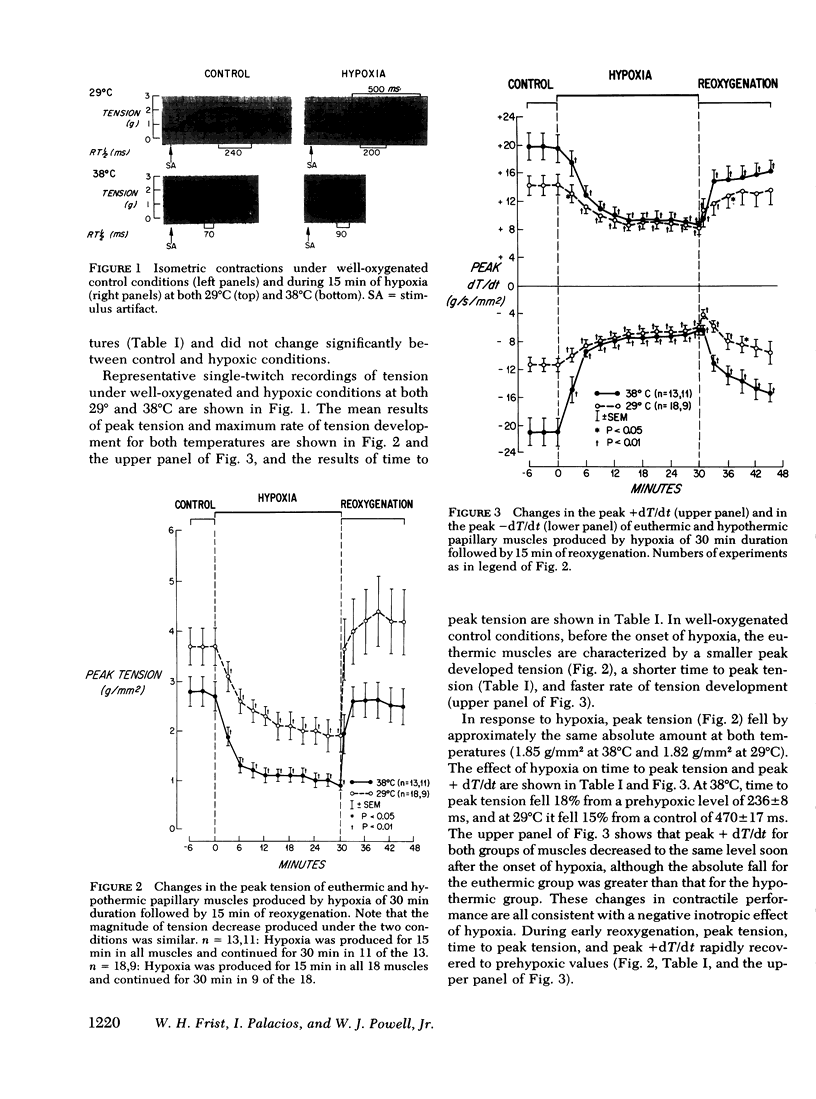
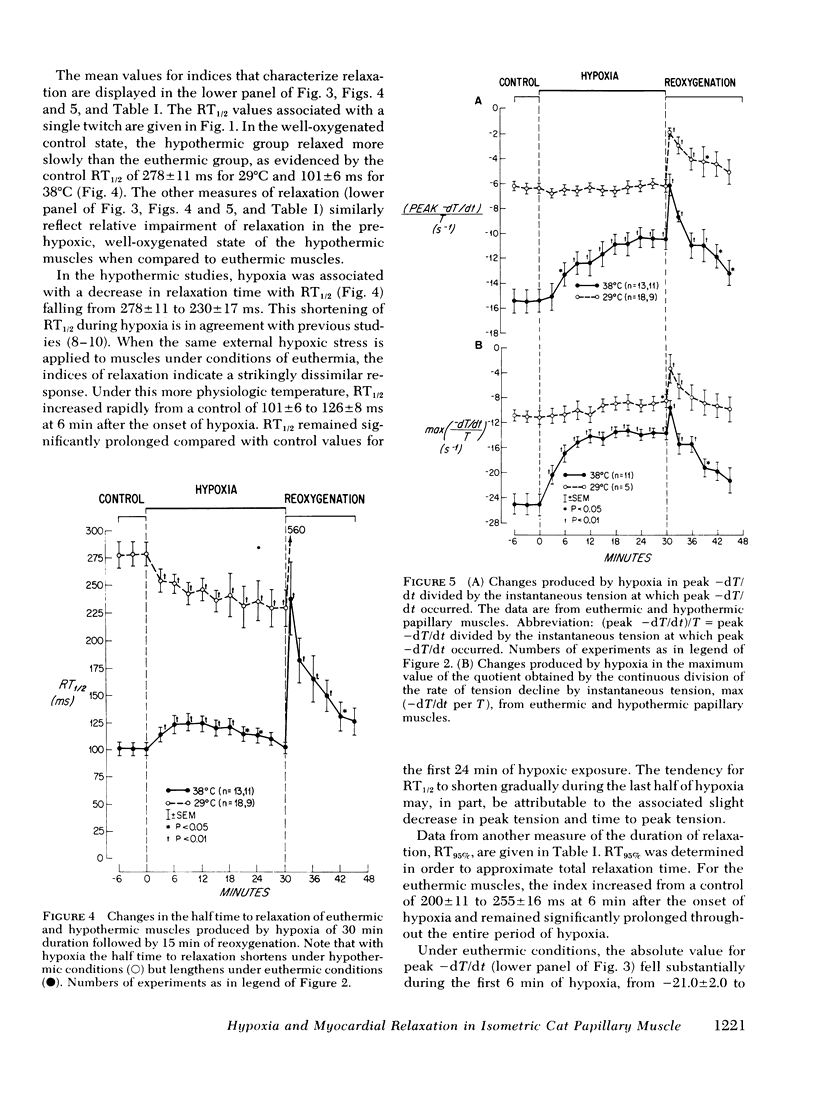
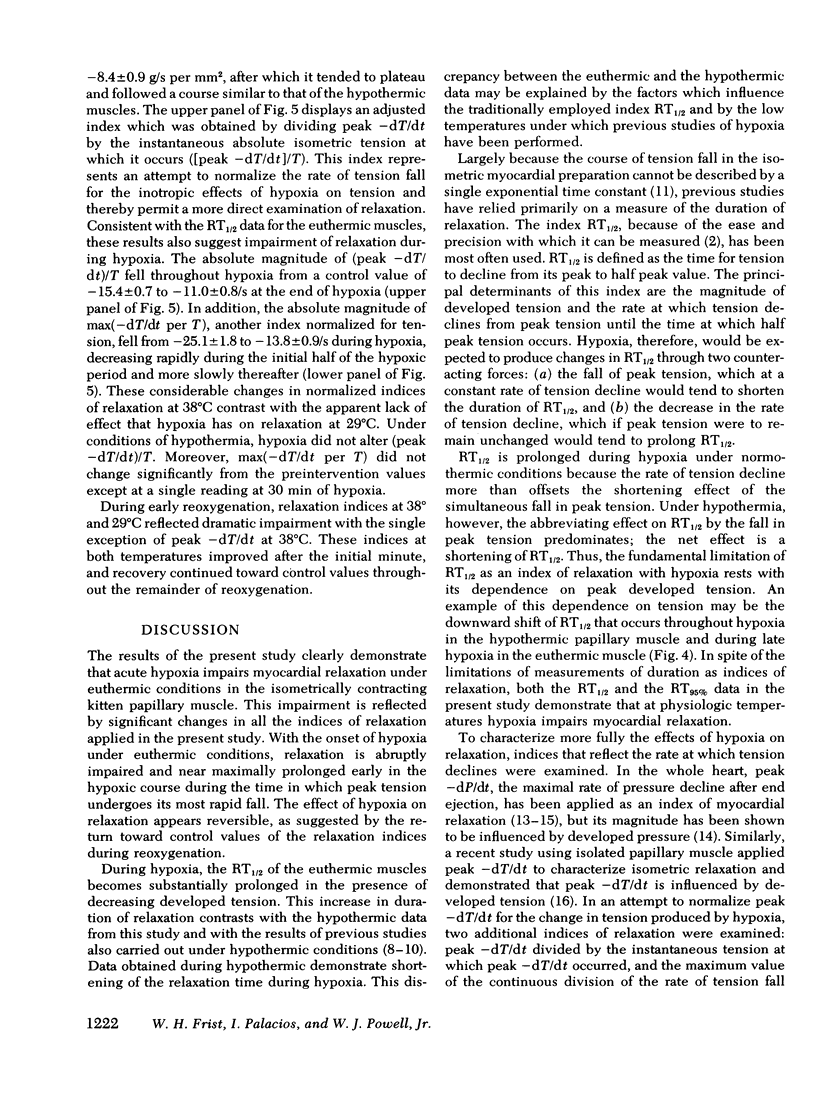
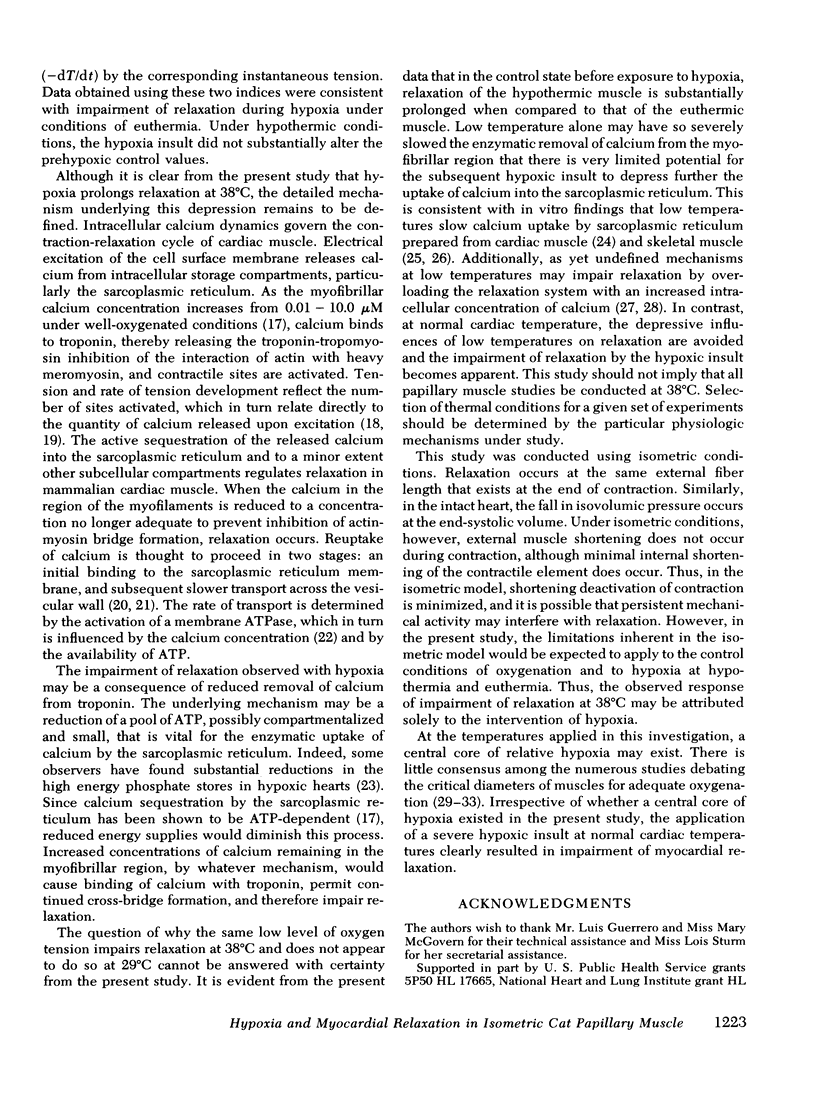
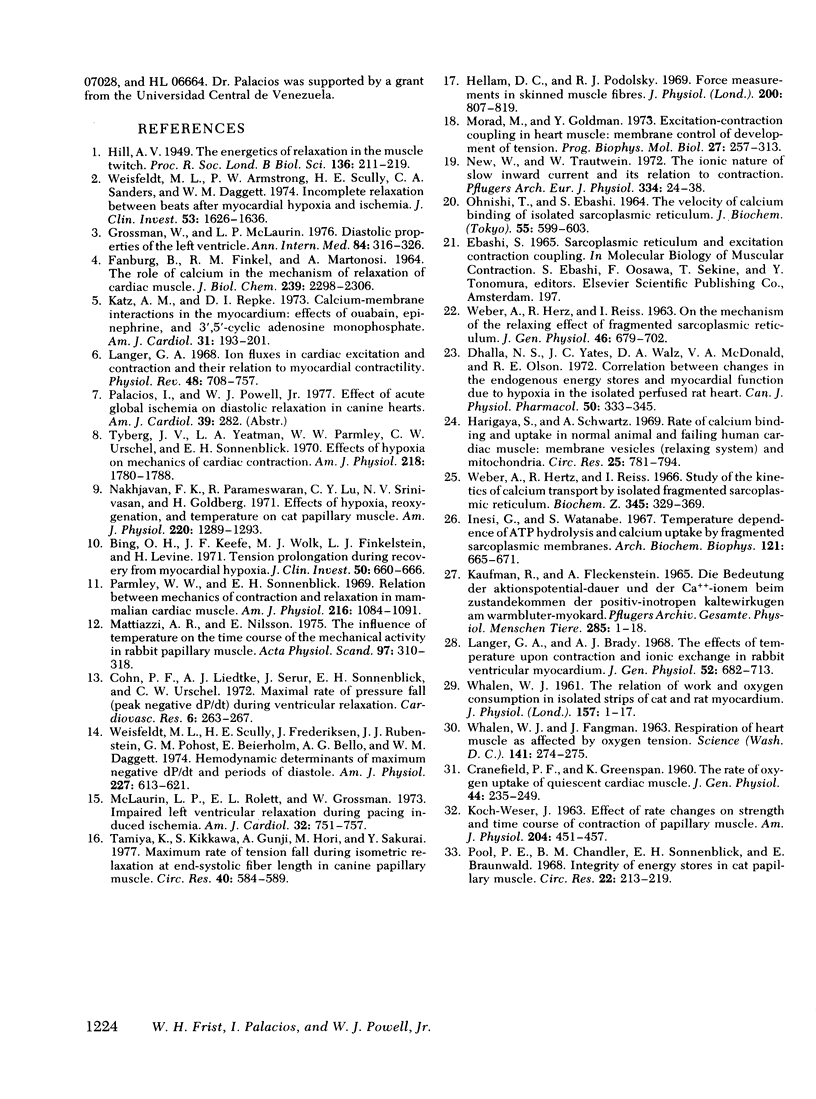
Selected References
These references are in PubMed. This may not be the complete list of references from this article.
- Bing O. H., Keefe J. F., Wolk M. J., Finkelstein L. J., Levine H. J. Tension prolongation during recovery from myocardial hypoxia. J Clin Invest. 1971 Mar;50(3):660–666. doi: 10.1172/JCI106536. [DOI] [PMC free article] [PubMed] [Google Scholar]
- CRANEFIELD P. F., GREENSPAN K. The rate of oxygen uptake of quiescent cardiac muscle. J Gen Physiol. 1960 Nov;44:235–249. doi: 10.1085/jgp.44.2.235. [DOI] [PMC free article] [PubMed] [Google Scholar]
- Cohn P. F., Liedtke A. J., Serur J., Sonnenblick E. H., Urschel C. W. Maximal rate of pressure fall (peak negative dP-dt) during ventricular relaxation. Cardiovasc Res. 1972 May;6(3):263–267. doi: 10.1093/cvr/6.3.263. [DOI] [PubMed] [Google Scholar]
- Dhalla N. S., Yates J. C., Walz D. A., McDonald V. A., Olson R. E. Correlation between changes in the endogenous energy stores and myocardial function due to hypoxia in the isolated perfused rat heart. Can J Physiol Pharmacol. 1972 Apr;50(4):333–345. doi: 10.1139/y72-050. [DOI] [PubMed] [Google Scholar]
- FANBURG B., FINKEL R. M., MARTONOSI A. THE ROLE OF CALCIUM IN THE MECHANISM OF RELAXATION OF CARDIAC MUSCLE. J Biol Chem. 1964 Jul;239:2298–2305. [PubMed] [Google Scholar]
- Grossman W., McLaurin L. P. Diastolic properties of the left ventricle. Ann Intern Med. 1976 Mar;84(3):316–326. doi: 10.7326/0003-4819-84-3-316. [DOI] [PubMed] [Google Scholar]
- HILL A. V. The energetics of relaxation in a muscle twitch. Proc R Soc Lond B Biol Sci. 1949 Jun 23;136(883):211–219. doi: 10.1098/rspb.1949.0020. [DOI] [PubMed] [Google Scholar]
- Harigaya S., Schwartz A. Rate of calcium binding and uptake in normal animal and failing human cardiac muscle. Membrane vesicles (relaxing system) and mitochondria. Circ Res. 1969 Dec;25(6):781–794. doi: 10.1161/01.res.25.6.781. [DOI] [PubMed] [Google Scholar]
- Hellam D. C., Podolsky R. J. Force measurements in skinned muscle fibres. J Physiol. 1969 Feb;200(3):807–819. doi: 10.1113/jphysiol.1969.sp008723. [DOI] [PMC free article] [PubMed] [Google Scholar]
- Inesi G., Watanabe S. Temperature dependence of ATP hydrolysis and calcium uptake by fragmented sarcoplasmic membranes. Arch Biochem Biophys. 1967 Sep;121(3):665–671. doi: 10.1016/0003-9861(67)90051-3. [DOI] [PubMed] [Google Scholar]
- KOCH-WESER J. Effect of rate changes on strength and time course of contraction of papillary muscle. Am J Physiol. 1963 Mar;204:451–457. doi: 10.1152/ajplegacy.1963.204.3.451. [DOI] [PubMed] [Google Scholar]
- Katz A. M., Repke D. I. Calcium-membrane interactions in the myocardium: effects of ouabain, epinephrine and 3',5'-cyclic adenosine monophosphate. Am J Cardiol. 1973 Feb;31(2):193–201. doi: 10.1016/0002-9149(73)91032-1. [DOI] [PubMed] [Google Scholar]
- Kaufmann R., Fleckenstein A. Die Bedeutung der Aktionspotential-Dauer und der Ca++-Ionen beim Zustandekommen der positiv-inotropen Kältewirkungen am Warmblüter-Myokard. Pflugers Arch Gesamte Physiol Menschen Tiere. 1965 Jul 16;285(1):1–18. [PubMed] [Google Scholar]
- Langer G. A., Brady A. J. The effects of temperature upon contraction and ionic exchange in rabbit ventricular myocardium. Relation to control of active state. J Gen Physiol. 1968 Oct;52(4):682–713. doi: 10.1085/jgp.52.4.682. [DOI] [PMC free article] [PubMed] [Google Scholar]
- Langer G. A. Ion fluxes in cardiac excitation and contraction and their relation to myocardial contractility. Physiol Rev. 1968 Oct;48(4):708–757. doi: 10.1152/physrev.1968.48.4.708. [DOI] [PubMed] [Google Scholar]
- Mattiazzi A. R., Nilsson E. The influence of temperature on the time course of the mechanical activity in rabbit papillary muscle. Acta Physiol Scand. 1976 Jul;97(3):310–318. doi: 10.1111/j.1748-1716.1976.tb10268.x. [DOI] [PubMed] [Google Scholar]
- McLaurin L. P., Rolett E. L., Grossman W. Impaired left ventricular relaxation during pacing-induced ischemia. Am J Cardiol. 1973 Nov;32(6):751–757. doi: 10.1016/s0002-9149(73)80002-5. [DOI] [PubMed] [Google Scholar]
- Nakhjavan F. K., Parameswaran R., Lu C. Y., Srinivasan N. V., Goldberg H. Effects of hypoxia, reoxygenation, and temperature on cat papillary muscle. Am J Physiol. 1971 May;220(5):1289–1293. doi: 10.1152/ajplegacy.1971.220.5.1289. [DOI] [PubMed] [Google Scholar]
- New W., Trautwein W. The ionic nature of slow inward current and its relation to contraction. Pflugers Arch. 1972;334(1):24–38. doi: 10.1007/BF00585998. [DOI] [PubMed] [Google Scholar]
- OHNISHI T., EBASHI S. THE VELOCITY OF CALCIUM BINDING OF ISOLATED SARCOPLASMIC RETICULUM. J Biochem. 1964 Jun;55:599–603. doi: 10.1093/oxfordjournals.jbchem.a127932. [DOI] [PubMed] [Google Scholar]
- Parmley W. W., Sonnenblick E. H. Relation between mechanics of contraction and relaxation in mammalian cardiac muscle. Am J Physiol. 1969 May;216(5):1084–1091. doi: 10.1152/ajplegacy.1969.216.5.1084. [DOI] [PubMed] [Google Scholar]
- Pool P. E., Chandler B. M., Sonnenblick E. H., Braunwald E. Integrity of energy stores in cat papillary muscle. Effect of changes in temperature and frequency of contraction on high energy phosphate stores. Circ Res. 1968 Feb;22(2):213–219. doi: 10.1161/01.res.22.2.213. [DOI] [PubMed] [Google Scholar]
- Tamiya K., Kikkawa S., Gunji A., Hori M., Sakurai Y. Maximum rate of tension fall during isometric relaxation at end-systolic fiber length in canine papillary muscle. Circ Res. 1977 Jun;40(6):584–589. doi: 10.1161/01.res.40.6.584. [DOI] [PubMed] [Google Scholar]
- Tyberg J. V., Yeatman L. A., Parmley W. W., Urschel C. W., Sonnenblick E. H. Effects of hypoxia on mechanics of cardiac contraction. Am J Physiol. 1970 Jun;218(6):1780–1788. doi: 10.1152/ajplegacy.1970.218.6.1780. [DOI] [PubMed] [Google Scholar]
- WEBER A., HERZ R., REISS I. On the mechanism of the relaxing effect of fragmented sarcoplasmic reticulum. J Gen Physiol. 1963 Mar;46:679–702. doi: 10.1085/jgp.46.4.679. [DOI] [PMC free article] [PubMed] [Google Scholar]
- WHALEN W. J., FANGMAN J. Respiration of heart muscle as affected by oxygen tension. Science. 1963 Jul 19;141(3577):274–275. doi: 10.1126/science.141.3577.274. [DOI] [PubMed] [Google Scholar]
- WHALEN W. J. The relation of work and oxygen consumption in isolated strips of cat and rat myocardium. J Physiol. 1961 Jun;157:1–17. doi: 10.1113/jphysiol.1961.sp006701. [DOI] [PMC free article] [PubMed] [Google Scholar]
- Weisfeldt M. L., Armstrong P., Scully H. E., Sanders C. A., Daggett W. M. Incomplete relaxation between beats after myocardial hypoxia and ischemia. J Clin Invest. 1974 Jun;53(6):1626–1636. doi: 10.1172/JCI107713. [DOI] [PMC free article] [PubMed] [Google Scholar]
- Weisfeldt M. L., Scully H. E., Frederiksen J., Rubenstein J. J., Pohost G. M., Beierholm E., Bello A. G., Daggett W. M. Hemodynamic determinants of maximum negative dP-dt and periods of diastole. Am J Physiol. 1974 Sep;227(3):613–621. doi: 10.1152/ajplegacy.1974.227.3.613. [DOI] [PubMed] [Google Scholar]


